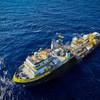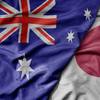Not too long ago, the gas turbine for commercial maritime use was relegated as an exotic luxury by many, as the use was centered mainly on high performance naval vessel applications. But a metamorphosis of sorts has occurred in recent years, and a the market potential for gas turbine usage on commercial boats and ships is rapidly expanding. Specifically, the evolution of very large, very fast cargo, automotive and passenger ferries has resulted in the increased specification of gas turbine propulsion packages.
Also, the increased focus on the environment and tighter scrutiny on exhaust emissions has led to new orders for gas turbines for new users, such as the cruise ship market.
Late last month one of the higher-profile gas turbine projects -- FastShip -- selected Rolls Royce gas turbines to power its revolutionary high speed Trans-Atlantic fleet. The deal, worth $1 billion, represents the largest-ever single order for Rolls Royce for marine engines. The agreement requires Rolls Royce to construct 25 marine Trent gas turbines - five in each of FastShip's initial four vessels, and five spares. Additionally, Rolls Royce will provide a 20-year support package throughout the life of each engine, as well as establish a maintenance facility in the Philadelphia region for the contract's management purposes.
The Rolls Royce Trent engines, which are derived from the company's Trent aero-engine, will drive one Kamewa water jet, delivering 335,000-hp. The propulsion package will allow the 860 ft. (262 m) vessels, carrying a payload of 10,000-tons to complete the journey from Philadelphia to Cherbourg in less than four days, while attaining speeds of up to 40 knots.
Another watershed-type contract was the specification of GE gas turbine engines for Royal Caribbean's new cruise ships. Royal Caribbean, which has battled public relations problems of late with some non-propulsion related pollution issues, loudly touted the gas turbine choice of propulsion as evidence of its commitment to improving the environment in which it operates. GE has derived much of its business in the marine market from the naval side, but increasingly it has found its LM aeroderivative gas turbine products specified on commercial craft, from fast ferries to cruise ships. In fact, the company recently passed a major milestone as GE's worldwide LM aeroderivative gas turbine fleet reached the 40 million operating hour mark.
GE has also seen its market expand in its traditional naval markets, as its LM2500 aeroderivative gas turbine was recently used as the prime mover for the Integrated Power Systems (IPS) test program, marking the first time that the Navy had used the LM2500 in an electric drive configuration. The IPS program, under direction of the U.S. Navy's DD21 and Associated Technologies Program Executive Office, is designed to enhance ship performance and increase arrangement flexibility.
Solar Turbines is another traditional gas turbine company, and a pair of its Taurus 60M gas turbines were recently specified to power a 174-ft. (53-m), 450-passenger 43-knot catamaran being built by FBM Marine in the U.K. for operation in Greece. The ferry follows another Solar Turbine powered ferry -- Athina -- into the Greek market. To date, Athina has logged more than 2,000 operating hours with no lost trips due to engine related problems. In total, the Taurus 60M has accumulated over 186,000 operating hours in 13 fast ferries, including eight ferries in Hong Kong, three ferries in the U.S. and two ferries in Greece.
Sponsored Content
Safer Starts Here: Build Ships, Protect Crews

Featured videos

Corn Belt Ports Streamlines Critical Agriculture River Shipments

Cat Pushes Forward on Hybrid Electric Solutions, Alternative Fuels
Subscribe for
Maritime Reporter E-News
Maritime Reporter E-News is the maritime industry's largest circulation and most authoritative ENews Service, delivered to your Email five times per week











